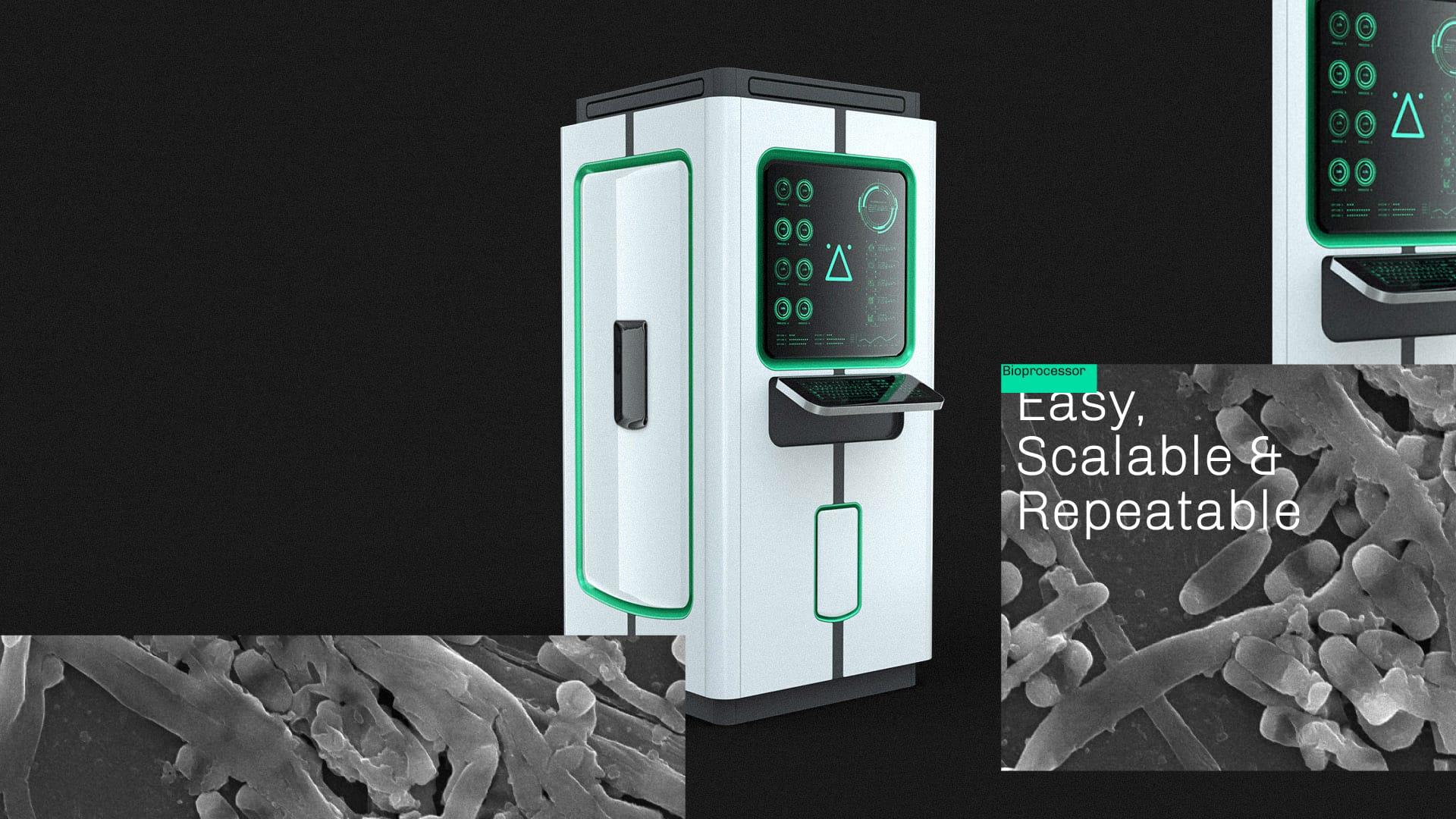We make
biomanufacturing
easy, scalable
and repeatable
The Bioprocessor
The Bioprocessor downsizes a whole biotech facility into an all-in-one, plug & play desktop unit with continuous, unidirectional, and laminar flow. It produces daily harvests and keeps cells at peak efficiency by controlling its microenvironmental parameters, such as culture medium, pH, dissolved oxygen, and cell density, online and inline.

-
200x
200-fold decrease in size in comparison to traditional biotech facilities
-
100x-400x
processing volume decrease between 100x and 400x depending on the cell culture.
-
70x
the estimated increase in productivity
